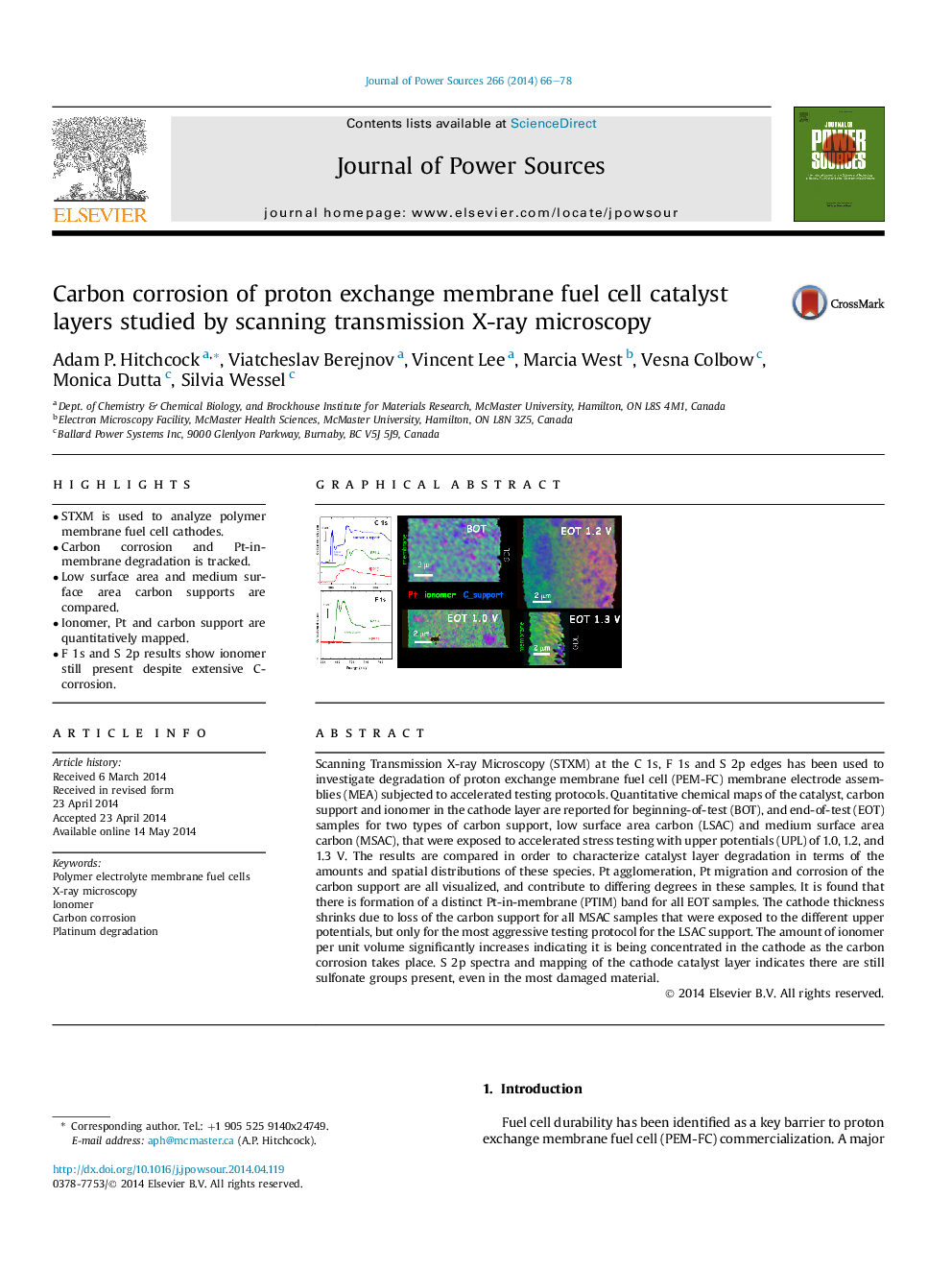| کد مقاله | کد نشریه | سال انتشار | مقاله انگلیسی | نسخه تمام متن |
|---|---|---|---|---|
| 1286721 | 1497966 | 2014 | 13 صفحه PDF | دانلود رایگان |
• STXM is used to analyze polymer membrane fuel cell cathodes.
• Carbon corrosion and Pt-in-membrane degradation is tracked.
• Low surface area and medium surface area carbon supports are compared.
• Ionomer, Pt and carbon support are quantitatively mapped.
• F 1s and S 2p results show ionomer still present despite extensive C-corrosion.
Scanning Transmission X-ray Microscopy (STXM) at the C 1s, F 1s and S 2p edges has been used to investigate degradation of proton exchange membrane fuel cell (PEM-FC) membrane electrode assemblies (MEA) subjected to accelerated testing protocols. Quantitative chemical maps of the catalyst, carbon support and ionomer in the cathode layer are reported for beginning-of-test (BOT), and end-of-test (EOT) samples for two types of carbon support, low surface area carbon (LSAC) and medium surface area carbon (MSAC), that were exposed to accelerated stress testing with upper potentials (UPL) of 1.0, 1.2, and 1.3 V. The results are compared in order to characterize catalyst layer degradation in terms of the amounts and spatial distributions of these species. Pt agglomeration, Pt migration and corrosion of the carbon support are all visualized, and contribute to differing degrees in these samples. It is found that there is formation of a distinct Pt-in-membrane (PTIM) band for all EOT samples. The cathode thickness shrinks due to loss of the carbon support for all MSAC samples that were exposed to the different upper potentials, but only for the most aggressive testing protocol for the LSAC support. The amount of ionomer per unit volume significantly increases indicating it is being concentrated in the cathode as the carbon corrosion takes place. S 2p spectra and mapping of the cathode catalyst layer indicates there are still sulfonate groups present, even in the most damaged material.
Figure optionsDownload as PowerPoint slide
Journal: Journal of Power Sources - Volume 266, 15 November 2014, Pages 66–78
